
Patrick Eamon Mills is an English comics writer and editor who, along with John Wagner, revitalised British boys' comics in the 1970s, and has remained a leading light in British comics ever since. He has been called "the godfather of British comics".
A graphic novel is a long-form work of sequential art. The term graphic novel is often applied broadly, including fiction, non-fiction, and anthologized work, though this practice is highly contested by comics scholars and industry professionals. It is, at least in the United States, typically distinct from the term comic book, which is generally used for comics periodicals and trade paperbacks.

Comics is a medium used to express ideas with images, often combined with text or other visual information. It typically takes the form of a sequence of panels of images. Textual devices such as speech balloons, captions, and onomatopoeia can indicate dialogue, narration, sound effects, or other information. There is no consensus among theorists and historians on a definition of comics; some emphasize the combination of images and text, some sequentiality or other image relations, and others historical aspects such as mass reproduction or the use of recurring characters. Cartooning and other forms of illustration are the most common image-making means in comics; Photo comics is a form that uses photographic images. Common forms include comic strips, editorial and gag cartoons, and comic books. Since the late 20th century, bound volumes such as graphic novels, comic albums, and tankōbon have become increasingly common, along with webcomics as well as scientific/medical comics.
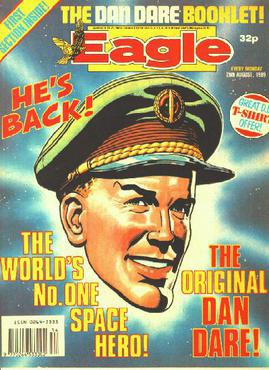
Dan Dare is a British science fiction comic hero, created by illustrator Frank Hampson who also wrote the first stories. Dare appeared in the Eagle comic series Dan Dare, Pilot of the Future from 1950 to 1967, and dramatised seven times a week on Radio Luxembourg (1951–1956).

Astro Boy, known in Japan by its original name Mighty Atom, is a Japanese manga series written and illustrated by Osamu Tezuka. It was serialized in Kobunsha's Shōnen from 1952 to 1968. The 112 chapters were collected into 23 tankōbon volumes by Akita Shoten. Dark Horse Comics published an English translation in 2002. The story follows Astro Boy, an android young boy with human emotions who is created by Umataro Tenma after the recent death of his son Tobio. Eventually, Astro is sold to a robot circus run by Hamegg, but is saved from his servitude by Professor Ochanomizu. Astro becomes a surrogate son to Ochanomizu who creates a robotic family for Astro and helps him to live a normal life like an average human boy, while accompanying him on adventures.

Osamu Tezuka was a Japanese manga artist, cartoonist and animator. Born in Osaka Prefecture, his prolific output, pioneering techniques and innovative redefinitions of genres earned him such titles as "the Father of Manga", "the Godfather of Manga" and "the God of Manga". Additionally, he is often considered the Japanese equivalent to Walt Disney, who served as a major inspiration during Tezuka's formative years. Though this phrase praises the quality of his early manga works for children and animations, it also blurs the significant influence of his later, more literary, gekiga works.

Alternative comics or independent comics cover a range of American comics that have appeared since the 1980s, following the underground comix movement of the late 1960s and early 1970s. Alternative comics present an alternative to mainstream superhero comics which in the past have dominated the American comic book industry. Alternative comic books span a wide range of genres, artistic styles, and subjects.

Shotaro Ishinomori was a Japanese manga artist who became an influential figure in manga, anime, and tokusatsu, creating several immensely popular long-running series such as Cyborg 009, the Super Sentai series, and the Kamen Rider series. He was twice awarded by the Shogakukan Manga Awards, in 1968 for Sabu to Ichi Torimono Hikae and in 1988 for Hotel and Manga Nihon Keizai Nyumon. He was born as Shotaro Onodera in Tome, Miyagi, and was also known as Shotaro Ishimori prior to 1986, when he changed his family name to Ishinomori by adding the no (ノ) character in katakana.
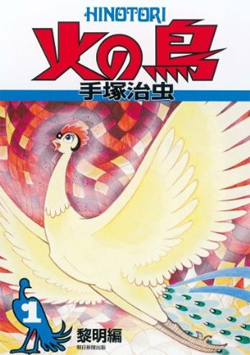
Phoenix is an unfinished manga series written and illustrated by Osamu Tezuka. Tezuka considered Phoenix his "life's work"; it consists of 12 parts, each of which tells a separate, self-contained story and takes place in a different era. The plots go back and forth from the remote future to prehistoric times. The story was never completed, having been cut short by Tezuka's death in 1989.
Titan Publishing Group is the publishing division of the British entertainment company Titan Entertainment, which was established as Titan Books in 1981. The books division has two main areas of publishing: film and television tie-ins and cinema reference books; and graphic novels and comics references and art titles. Its imprints are Titan Books, Titan Comics and Titan Magazines.

Wendy Pini and Richard Pini are the husband-and-wife team responsible for creating the well-known Elfquest series of comics, graphic novels and prose works. They are also known as WaRP.
"The Long Tomorrow" is the title of a science fiction comics short story serialized in two segments in the French magazine Metal Hurlant in 1976. It was written by Dan O'Bannon, and illustrated by Moebius. It is noted for its influential visual design, which inspired the designs of feature films including Blade Runner, Tron, Alien, and The Abyss. The story was reprinted in Moebius Book Four.
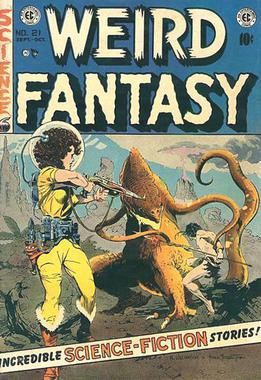
Weird Fantasy is an American dark fantasy and science fiction anthology comic that was part of the EC Comics line in the early 1950s. The companion comic for Weird Fantasy was Weird Science. Over a four-year span, Weird Fantasy ran for 22 issues, ending with the November–December 1953 issue.

Weird Science was an American science fiction comic book magazine that was part of the EC Comics line in the early 1950s. Over a four-year span, the comic ran for 22 issues, ending with the November–December, 1953 issue. Weird Fantasy was a sister title published during the same time frame.
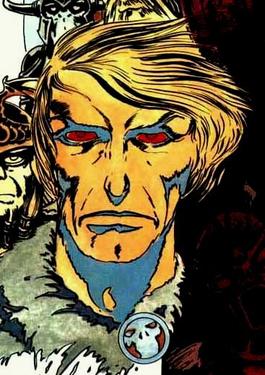
Lone Sloane is a science fiction comics character created in 1966 by the French cartoonist Philippe Druillet.

Fiction House was an American publisher of pulp magazines and comic books that existed from the 1920s to the 1950s. It was founded by John B. "Jack" Kelly and John W. Glenister. By the late 1930s, the publisher was Thurman T. Scott. Its comics division was best known for its pinup-style good girl art, as epitomized by the company's most popular character, Sheena, Queen of the Jungle.

Zig et Puce is a Franco-Belgian comics series created by Alain Saint-Ogan in 1925 that became popular and influential over a long period. After ending production, it was revived by Greg for a second successful publication run.

Superhero fiction is a subgenre of science fiction examining the adventures, personalities and ethics of costumed crime fighters known as superheroes, who often possess superhuman powers and battle similarly powered criminals known as supervillains. The genre primarily falls between hard fantasy and soft science fiction in the spectrum of scientific realism. It is most commonly associated with American comic books, though it has expanded into other media through adaptations and original works.
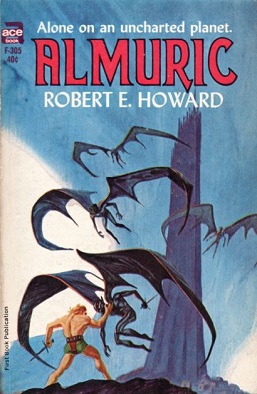
Almuric is a science fiction novel by American writer Robert E. Howard. It was originally serialized in three parts in the magazine Weird Tales beginning in May 1939. The novel was first published in book form in 1964 by Ace Books.
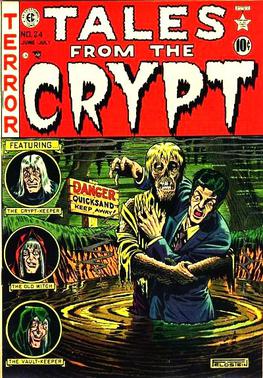
Horror comics are comic books, graphic novels, black-and-white comics magazines, and manga focusing on horror fiction. In the US market, horror comic books reached a peak in the late 1940s through the mid-1950s, when concern over content and the imposition of the self-censorship Comics Code Authority contributed to the demise of many titles and the toning down of others. Black-and-white horror-comics magazines, which did not fall under the Code, flourished from the mid-1960s through the early 1980s from a variety of publishers. Mainstream American color comic books experienced a horror resurgence in the 1970s, following a loosening of the Code. While the genre has had greater and lesser periods of popularity, it occupies a firm niche in comics as of the 2010s.
















